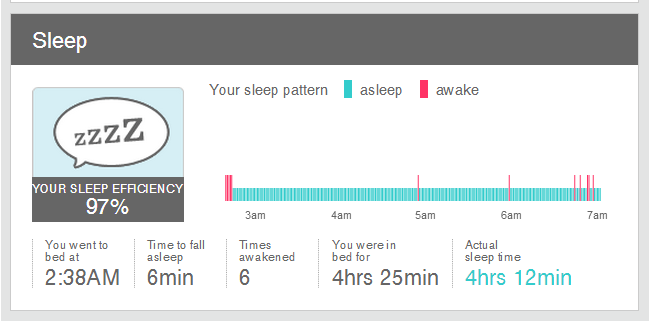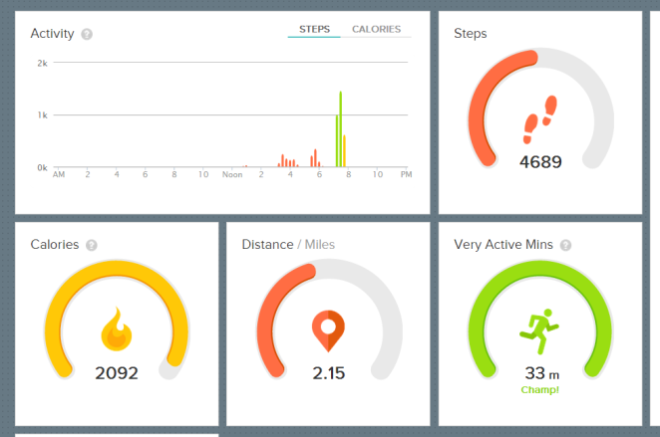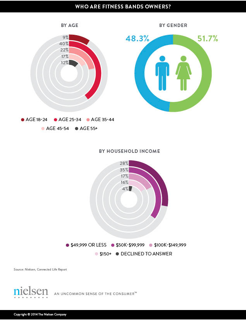Wearable technology devices are the new “it” product. Apple has created the Apple Watch, which does way more than tell time. The watch can run many different apps, track your fitness as well as make phone calls and send text messages. Another popular wearable technology today is the Fitbit. The Fitbit is offered in many different styles and has many different features. The most recently released version of the Fitbit, the Fitbit Blaze has a wide variety of features. The watch can track your heartrate, give you workout summaries, notifications such as calls and text messages, can track your various types of workouts from cross country running to weight training, can control your music and track your sleep patterns (fitbit.com).

https://www.youtube.com/watch?v=3k3DNT54NkA
This technology has come a long way since the once popular pedometer which only counted the amount of steps you took in a day. The new technologies track many more things and are much more helpful than the pedometer was. Tracking heart rate and sleep patterns can be very beneficial to users. Tracking your heart rate can reveal a lot of information about the user’s overall health. If your heart is beating too much for your age and weight it can be a good signal that something is wrong. Tracking sleep is another very common feature on fitbits as sleep is a vital part of a person’s health and wellbeing.

The way sleep is tracked varies by device, some just track hours slept while others can track how many minutes you have spent restless throughout the night. It is believed that 8 hours of sleep a night is beneficial for most people. Those that get the most sleep are thought to be more productive and enjoyable people. These devices help tell users how much sleep they are actually getting a night by letting users know how many hours a night they spend in REM sleep or restless. Some devices also check calorie intake, have GPS features, and can track user’s blood pressure which is all very helpful (www.wearable-technologies.com).

(Fitbit Flex: How A Bracelet Can Help You Get Lean http://www.joelminden.com/)
All of the information the fitbit tracks get sent wirelessly to your smartphone or synced to your computer. This allows you to track your progress and see all of your information daily. The above photo shows a screenshot of how the tracked information is displayed.
The fitbit can also be an extremely social device. The app allows you to connect with friends and family who have fitbits to stay up to date on progress and to motivate others. This has been proven to be very beneficial to users. There are also various challenges and “trophies” users can get when they reach certain milestones in their activity and fitness progress.
Studies have shown that this sort of fitness tracking has been proven to modify users behaviors, especially physical fitness. A study done by Julie B. Wang, Lisa A. Cadmus-Bertram, Loki Natarajan, Martha M. White, Hala Madanat, Jeanne F. Nichols, Guadalupe X. Ayala and John P. Pierce researched the effects of wearable tracking devices like the Fitbit and text messaging prompts on user’s physical activity in overweight adults. Sixty seven overweight adults wore a Fitbit tracker for 6 weeks, half also received 3 daily physical activity related text messages. The study found that the Fitbit caused a small increase in physical activity for users (Wang et al, 2015).
The Fitbit is a great new technology that can help users track various things, from hours slept to tracking their outdoor runs. It can also help users increase their physical activity through users social networks by connecting with friends and family who also have a fitbit and by rewarding users with “trophies” when they reach a new step milestone or reach a goal. The Fitbit might one day be a very useful tool in the health industry.
References:
https://www.wearable-technologies.com/2016/04/what-tracking-metric-do-you-care-about/
http://www.joelminden.com/fitbit-flex-how-a-bracelet-can-help-you-get-lean/
Wang, J. B., Cadmus-Bertram, L. A., Natarajan, L., White, M. M., Madanat, H., Nichols, J.F., Ayala, G.X., Pierce. J.P., (2015). Wearable sensor/device (Fitbit One) and SMS text-messaging prompts to increase physical activity in overweight and obese adults; A randomized controlled trial. Telemedicine and E-Health. 21 (10), 782-792.
